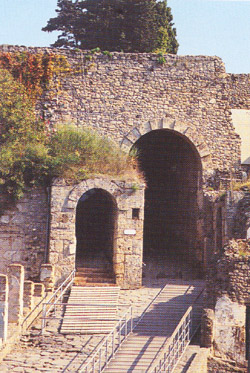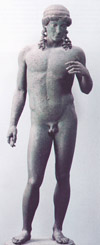
DEFENSIVE WALLS - POMPEII

Along the wide perimeter of the walls, still recognizable, opened no less than seven doors. Only of two we know the ancient denomination, but to the other has been ascribed a conventional name that express well their function and their placement in the general topography: Porta Marina Gate, Porta Ercolano Gate, Porta Vesuvio Gate, Porta di Nola Gate, Porta di Sarno Gate, Porta Nocera Gate and Porta di Stabia Gate. At the moment of the eruption the doors had lost their strategic or defensive role for let space to more wide and convenient doorway useful for commercial traffic and exaction of tribute. The eruption has crystallized them in a transformation that has never really happened
Porta Marina Gate is actually the most famous and frequented because from it is possible to enter in the archaeological area, but in the past it was not a very busy gate and so it was less monumental that others; but it gave rapid access to the civil and religious hearth of town: the Civil Forum.
Porta Ercolano Gate (the ancient Porta Saliniensis or 'Door of Salt') opened to Vesuvius slopes, Ercolano and to all villas and suburb of neapolitan gulf. The structure and the stucco covering, so similar to a private building, make it one of the most “modern” gate of the area.
Porta Vesuvio Gate at the moment of eruption was in complete remaking; situated at the end of the principal way, it was burdened by commercial traffic. Between Porta Ercolano Gate and Porta Vesuvio Gate there are three of the most imposing tower of the defensive walls: particularly the Tower XI of Via di Mercurio, where is possible to have a wonderful view on the town and the valley.
Porta di Nola Gate belong to the pre-roman age and is the most monumental, it’s typically defensive.
Porta di Stabia Gate, at least, is the oldest; from it was possible to arrive directly to the harbour of Pompei, on Sarno river. The paving so worn-out certify the intense traffic on that way.





